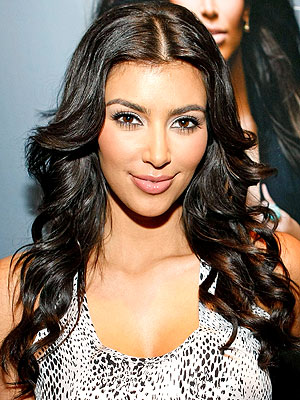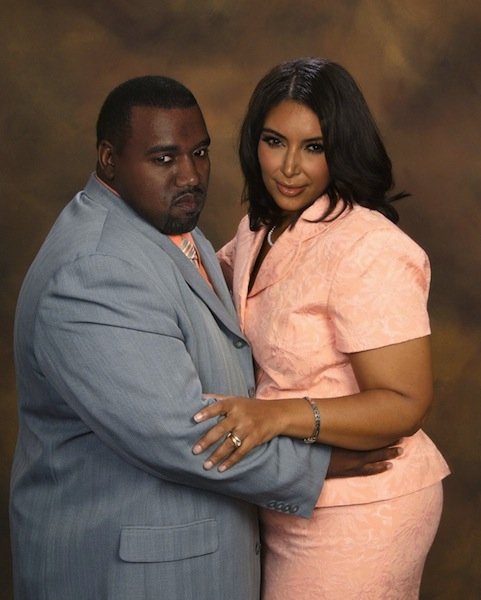Kevin Drum’s evident confusion regarding how advertising works in political campaigns got me thinking that there has to be a simple way to convey why political scientists generally discount the impact of individual campaign ads on election results. So, in the teaching spirit, let me try to put it in story form, using characters with which most Americans are familiar. (Many thanks to Pete Cahill for providing the illustrative links.) Now, keep in mind that this is a fictional story designed by me to illustrate some basic political science findings. The lessons are real – but the story is not. Got that? (I don’t want to deal with any lawyer types.) Ok, now pay attention.
Let’s start with the typical American voter – Kim Kardashian.
Like most Americans, Kim wants what is best for the country: a good reality show, unlimited clothing allowance, extended hours for dance clubs and, most important, money to pay for this along with all the free publicity she can get.
Now, assume there are two candidates vying for her heart….er….vote. There’s the Republican, professional basketball player Kris Humphries, and the Democrat, recording artist Kanye West. Both make the case that if selected they can get her all the free pub she could ever need and keep her living in the style to which she is accustomed. As evidence, Humphries releases the following campaign ad, a compilation of his on-court highlights.
[youtube /watch?feature=player_detailpage&v=buqGdh6Tm_E]
With a skill set like this, he argues, he will be a perennial all-star who will attract mega-endorsement money and, not insignificantly, a bushel of publicity. Who wouldn’t want to hang with this guy? This is an effective highlight reel, and Humphries makes sure to play it wherever Kim “America” hangs out. The media takes note of this, and agrees that Kris has all the “momentum” in this campaign due to his skilled campaign tactics.
But wait! Kanye is no fool. He puts together his own campaign video highlighting his knowledge of “power”, part of an all-out publicity effort designed to familiarize Kim America with his impressive track record of chart-topping hip-hop hits and music awards . With these awards, of course, comes a very lucrative recording career.
[youtube /watch?feature=player_detailpage&v=L53gjP-TtGE]
Note two important aspects of these “campaign ads”. First, Kris focuses on his record as a basketball player, and Kanye on his hip-hop accomplishments. That is, neither attempts to create an artificial version of himself by highlighting nonexistent accomplishments – Kris doesn’t pretend to sing and Kanye avoids dunking highlights. There’s a reality out there – their actual career records – that serves as a limiting factor on what they can put in their ads. Second, both campaign spots are designed to activate latent predispositions within Kim America. That is, they don’t try to persuade her to adopt the lifestyle of a convent nun who has taken a vow of poverty. They aren’t trying to change her views – to make her think differently – so much as they are framing their own record in a way that is designed to show how it addresses Kim’s existing attitudes. Kim, they know, craves free pub and a certain lifestyle – and so they sell themselves accordingly. Again, reality – Kim’s preexisting views and needs – constrains what they can do with their campaign advertising.
But our candidates don’t stop there. Kanye decides that in addition to highlighting his own accomplishments, it will help if he can denigrate Kris’. So he puts together a negative ad highlighting Humphries’ failures – here Dwight Howard eats Kris’ lunch with a monster block and turns it into two points for the Magic:
[youtube /watch?v=q-MplYIBnKk&feature=player_detailpage]
Now let’s add a fourth character to our drama: Kay-Drum. He’s a hip-hop pundit who strongly supports West in this bid for Kim America’s vote. When he sees West’s negative ad, he describes it as “devastating” to Humphries’ chances. The media takes note – Kay-Drum is an expert, after all, and he is quoted everywhere. Poor Kris – he claims that this ad misrepresents his record and besides, the score was 2-2 at the time! Too bad! The media decides Kris is a whiner.
But Humphries has his own attack machine, and he runs an ad revealing that President Obama, of all people, called Kanye West a jackass for interrupting Taylor Swift’s acceptance speech at a video awards show. When Kay-Drum sees this ad, however, rather than changing his views, he instead describes Humphries’ negative ad as “an act of moral depravity” by a “desperate” candidate who knows he can’t win Kim’s heart, er, vote. The media, carefully reporting how the “experts” are responding, decide that Kris’ tactics aren’t working, and that Kanye has run the more effective campaign.
In the end, much to Kay-Drum’s delight, Kim ends up “voting” for Kanye, and they live out their lives as a happy, slightly hefty couple. Humphries, meanwhile, ends up in Brooklyn on a loser team and fades into obscurity. (Reminder: this is a fable designed to teach – these events and characterizations are made up!)
What made the difference? Why did Kim choose Kanye? In the media post-mortem, leading journalists and experts like Kay-Drum make it clear that the more skilled advertising campaign run by Kanye made all the difference. Specifically, many scribes cite the campaign ad in which Dwight Howard “Swiftboated” Kris’ attempted dunk as the turning point in the campaign. It goes down in campaign lore alongside the Daisy and the Willie Horton ads and reinforces the media’s preoccupation with campaign strategy and tactics.
Now here’s the kicker: political scientists – long before any of the campaign ads came out, including the celebrated Howard “Swiftboat” rejection – predicted that Kim would, in the end, choose Kanye over Kris. How did they know this? By ignoring the campaign, and focusing on the fundamentals. First, they started with the simple fact that Kim America’s vote would likely depend on one factor: which candidate could provide her with her the resources necessary to maintain a lavish lifestyle and, not incidentally, receive lots of pub. True, she talked about love and Kanye’s hidden talents and how Kris getting rejected really opened her eyes to his shortcomings, and clothing accessories too, but all of that, basically, was a rationalization of the reasons that really drove her choice: money and face time on TMZ. Political scientists, having already constructed a simple formula based on previous campaigns that estimated the likely career earnings of a hip-hop star versus that of a basketball player, simply added a few variables to account for Kris’ and Kanye’s particular careers (any drug use, love of guns, weak knees, etc.) and came up with their prediction that Kanye was going to easily best Kris in the earnings and free pub categories, and that Kim would choose accordingly.
Note that in constructing this model, they didn’t worry that the campaign advertisements might skew the results. Why were they so confident? Because those ads couldn’t create an alternative universe – they could only frame the existing one. By creating measures of that reality – the earning potential of the two candidates – and assuming both sides would effectively frame their own earning potential, and denigrate the other person’s – political scientists assumed that the independent impact of the ads would largely cancel each other out, and that the final result would reflect the fundamental earning disparity between Kris and Kanye. A key assumption here is that both candidates run highly effective campaigns within the constraints imposed by reality. A second key assumption is that in a high-information environment, with lots of alternative sources by which to evaluate both candidates’ claims, Kim America would recognize the earning disparity between Kris and Kanye. This doesn’t mean she had to understand the economic intricacies of either profession – she just had to be reasonably confident that she knew which person would earn more. And in fact, by hanging out with friends at the clubs, and talking to members of her retinue and Khloe and Bruce and her hairdresser, and hobnobbing with Jay-Z and Beyoncé and Snooki, in my completely hypothetical universe she was able to come to a reasonably well-informed assessment.
And the rest is made-up history. Don’t they look happy? And well fed?
That my friends, is how political science works!
Any questions?


